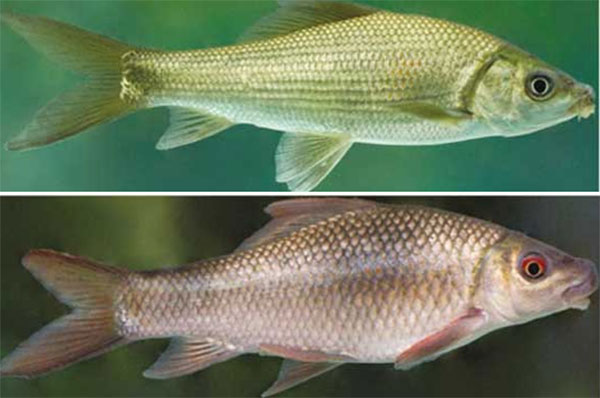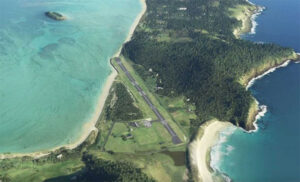
Considering biodiversity, Sri Lanka enjoys a prominent place. This is mainly due to the fact that Sri Lanka has 4 major climatic zones such as the oceans of the sea, co-existence, wet, dry, intermediate and semi-arid, and a elevation of up to 2,500 m above sea level.
The above factors have contributed to the development of different, diverse environments in Sri Lanka. This diverse environmental condition is the main contributor to bio-diversity nutrition. Unfortunately, there are many more threats to this rich biodiversity in our country. Therefore, Sri Lanka has declared internationally as a Biodiversity Hotspot in the region of biodiversity in the West Ghats of India.
The identity of the sword is revealed, the indigenous list of Sri Lanka …
In the biodiversity of Sri Lanka, fresh water fish has a special place. For this purpose, the canal, streams, rivers, reservoirs and water sources have contributed to this. In Sri Lanka, more than 90 species of fresh water are currently recorded, of which more than 50 species are endemic to Sri Lanka. Among these fish species, Cyprinidae (famigies) belong to penthians and climes. This is due to the fact that most of the fresh water fish species in Sri Lanka are recorded.
The genome is a significant place in the genes of this genus. In Sri Lanka, three species that are of the same nature are Labeo dussumieri, Labeo fisheri and Labeo porcellus lankae, and in addition to that, Roo (Labeo rohita), who was introduced to the fresh water fishing industry ). This includes the fish.
Labeo dussumieri (species) has been scientifically described in Southampton in 1842 for the first time. This species was later reported from Sri Lanka and was commonly known as Hirikanna. The first known species of Labeo fisher, discovered in 1917, is commonly known as balea. Labeo porcelus, also known as “South India”, was first scientifically described in South India and later first recorded in Sri Lanka in 1889. Thereafter, in 1952, a reputed scientist Dr.P. e. P. Deraniyagala named this fish named “Labeo porcellus lankae”, a sub species of Sri Lanka.
Prior to the 1990s, the tropical wetland was the most commonly recorded fish in the dry zone, followed by reporting very rarely, and this was also suspected of as a largely extinct fish. But for decades there has been no experiment in separating these fish from specific Indian species. Hiranay Sudasinghe of Peradeniya University, Tharindu Ranasinghe of Nawala Open University, Sampath Gunathilaka of IUCN and Prof Madhawa Meegaskubura of the Peradeniya University conducted an investigation taking into consideration the external features, structural features and molecular life characteristics. This research paper was published in the Zootaxa International Scientific magazine.
This study found that the hiricana species known as Labeo dussumieri in India was actually different from that of India’s Labeo dussumieri, the number of cortex, molecular biology and other characteristics. Accordingly, this species has been scientifically named Labeo heladiva with the intention of commemorating Hela Diva as a new species of Sri Lanka. Sri lanka is a species of fish in every riverside in Sri Lanka.
Labeo fishery has been clearly distinguished from the number of cortices, molecular life characteristics, and a number of other labeo species, among other characteristics. The boulder is considered as a species found only in the Mahaweli river valley. According to this research, the bird was reported from the Ambagangala area near the Parakrama Samudra in Polonnaruwa, which is located not far below the Mahaweli river and is well below the catchment area.
Prior to the 1990s, the tropialia (Labeo porcellus lankae), which was abundant in the dry zone tanks, was definitely a rare occurrence. It was reported that the fish was recorded again in the Dambara area of the Mahaweli River in 2012. However, according to this study, these reports were the result of the identification of malleable fish. The study was conducted by Canadara Oya, a tributary of the Malvathu Oya which flows from Medawachchiya in Thambalaya.
It also recorded this species from adjacent valleys of the Parangi Aru and Kala Oya valleys adjacent to Malvathu Oya. Prior to 1990, many records of the sperm were found in the Malwathu Oya. From the number of nodes in the linear section, from the linear section to the surface pylons, and the other characteristics of the cuttings vary from other species. Thus, external characteristics, structural properties and molecular properties
Prior to the 1990s, the tropialia (Labeo porcellus lankae), which was abundant in the dry zone tanks, was definitely a rare occurrence. It was reported that the fish was recorded again in the Dambara area of the Mahaweli River in 2012. However, according to this study, these reports were the result of the identification of malleable fish. The study was conducted by Canadara Oya, a tributary of the Malvathu Oya which flows from Medawachchiya in Thambalaya.
It also recorded this species from adjacent valleys of the Parangi Aru and Kala Oya valleys adjacent to Malvathu Oya. Prior to 1990, many records of the sperm were found in the Malwathu Oya. From the number of nodes in the linear section, from the linear section to the surface pylons, and the other characteristics of the cuttings vary from other species. Considering the external features, structure of the species and the molecular life characteristics of the cormorant, Labeo lankae was confirmed to be an scientifically recognized species of Labeo porcellus, a sister species in India.
The three species were scientifically re-described, and they looked into molecular phylogenetic relationships between them and the Indian species. According to this research, the three species that are naturally occurring in Sri Lanka are also endemic to Labeo. The three species of Laboeae, the Haryana, the Balai and the Thimbalaya, are reported extensively in rocky riparian, normal and deep-seated areas. Therefore it is important to protect these places for their existence. In particular, the birds and cumulus fish are mainly limited to one river valley Special measures should be taken to protect.
chandrasiri






